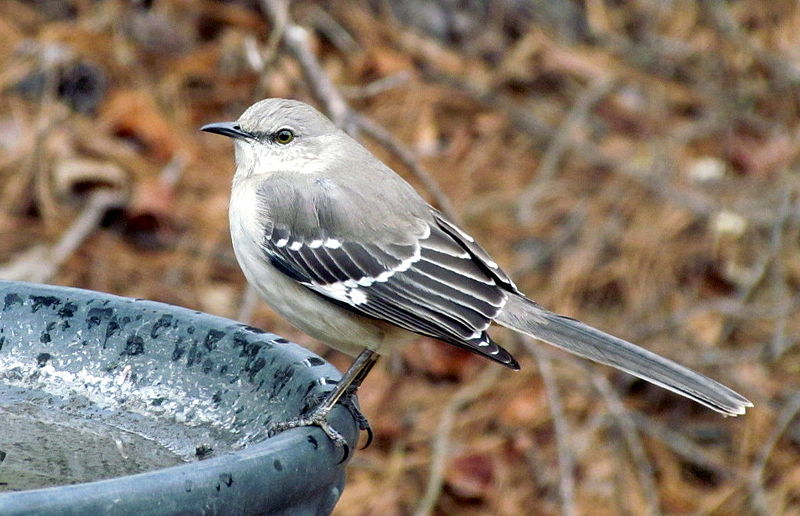Northern Mockingbird
The Northern Mockingbird (Mimus polyglottos) is the only mockingbird commonly found in North America. This bird is mainly a permanent resident, but northern birds may move south during harsh weather. This species has rarely been observed in Europe. This species was first described by Linnaeus in his Systema Naturæ in 1758 as Turdus polyglottos. The Northern Mockingbird is renowned for its mimicking ability, as reflected by the meaning of its scientific name, 'many-tongued mimic.' The Northern Mockingbird has gray to brown upper feathers and a paler belly. Its wings have white patches which are visible in flight.
The Northern Mockingbird is an omnivore. It eats both insects and fruits. It is often found in open areas and forest edges but forages in grassy land. The Northern Mockingbird breeds in southeastern Canada, the United States, northern Mexico, the Bahamas, the Cayman Islands and the Greater Antilles. It is replaced further south by its closest living relative, the Tropical Mockingbird. The Socorro Mockingbird, an endangered species, is also closely related, contrary to previous opinion. The Northern Mockingbird is listed as of Least Concern according to the International Union for Conservation of Nature (IUCN).
The Northern Mockingbird is known for its intelligence and has also been noted in North American culture. A 2009 study showed that the bird was able to recognize individual humans, particularly noting those who had previously been intruders or threats. Also birds recognize their breeding spots and return to areas in which they had greatest success in previous years. Urban birds are more likely to demonstrate this behavior. Finally, the mockingbird has influenced United States culture in multiple ways. The bird is a State bird of 5 states, has been used in book titles, and has also been used in popular songs and lullabies among other appearances in U.S. culture.


